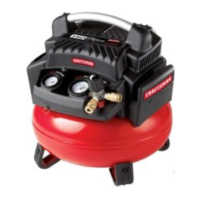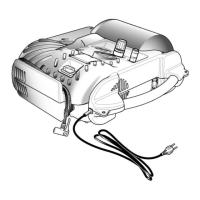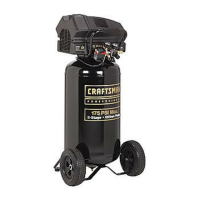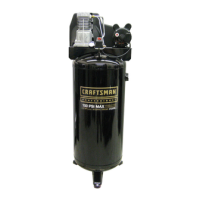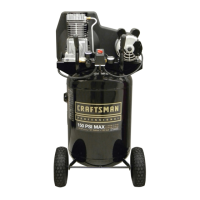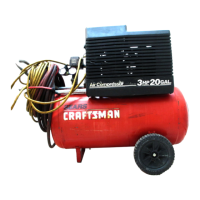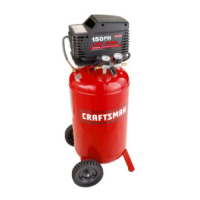4
SPECIFIC SAFETY INSTRUCTIONS
Read the operator’s
manual
Know your power tool. Read the operator’s manual carefully. Learn its applications and limita-
tions, as well as the specic potential hazards related to this tool. Following this rule will reduce
the risk of electric shock, re, or serious injury.
Eye protection
The operation of any power tool can result in foreign objects being thrown into your eyes, which
can result in severe eye damage. Before beginning power tool operation, always wear safety
goggles, safety glasses with side shields, or a full face shield when needed. We recommend
Wide Vision Safety Mask for use over eyeglasses or standard safety glasses with side shields.
Always use eye protection which is marked to comply with ANSI Z87.1.
RiskofFireor
Explosion
Do not spray ammable liquid in a conned area. The spray area must be well ventilated. Do
not smoke while spraying or spray where sparks or a ame is present. Keep compressors as
far from the spraying area as possible, at least 15 feet from the spraying area and all explosive
vapors.
RiskofBursting
Do not adjust the regulator to result in output pressure greater than the marked maximum pres-
sure of the attachment. Do not use at a pressure greater than the rated maximum pressure of
this compressor.
RiskofElectrical
Shock
Hazardous voltage: Disconnect from the power source before servicing. The compressor must
be grounded.
Hot Surface To reduce the risk of injury or damage, avoid contact with any hot surface.
RisktoHearing Always wear ear protection when using this tool. Failure to do so may result in hearing loss.
RisktoBreathing
Air obtained directly from the air compressor should never be used to supply air for human
consumption.
DrainTank
Drain the tank of moisture after each day’s use. If the unit will not be used for a while, it is best
to leave the drain valve open until such time as it is to be used. This will allow moisture to com-
pletely drain out and help prevent corrosion on the inside of tank.
Checkhosesforweakorwornconditionbeforeeachuse,
makingcertainallconnectionsaresecure. Do not use if
a defect is found. Purchase a new hose or take to a qualied
service center for examination and repair.
Release the pressure within the system slowly. Dust and
debris may be harmful.
Store idle tools out of the reach of children and other
untrained persons. Tools are dangerous in the hands of
untrained users.
Maintain tools with care. Follow maintenance instructions.
Properly maintained tools are easier to control.
Checkformisalignmentorbindingofmovingparts,
breakageofparts,andanyotherconditionthatmay
affectthetool’soperation.Ifdamaged,havethetool
servicedbeforeusing. Many accidents are caused by poorly
maintained tools.
Neverpointanytooltowardyourselforothers.
Keeptheexterioroftheaircompressordry,clean,and
free from oil and grease. Always use a clean cloth when
cleaning. Never use brake uids, gasoline, petroleum-based
products, or any strong solvents to clean the unit. Following
this rule will reduce the risk of deterioration of the enclosure
plastic.
SERVICE
Toolservicemustbeperformedonlybyqualiedrepair
personnel. Service or maintenance performed by unqualied
personnel may result in a risk of injury.
Disconnectthepowersupply,openthedrainvalveto
decompressthetankandallowwatertodrain,andallow
theaircompressortobecomecooltothetouchbefore
servicing. Turn the pressure regulator knob fully counter
clockwise after shutting off the compressor.
Whenservicingatool,useonlyidenticalreplacement
parts.SeePartsListinthismanual.Followthe
instructions in the Maintenance section of this manual.
Use of unauthorized parts or failure to follow the Maintenance
instructions may create a risk of injury.
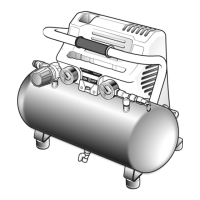
